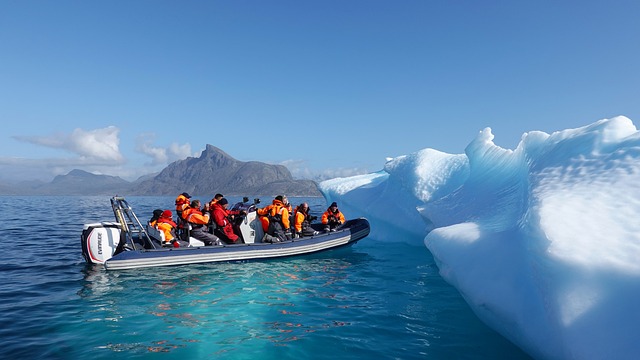In 2010, the world faced a pivotal moment in climate negotiations at the 16th Conference of the Parties (COP16) to the United Nations Framework Convention on Climate Change (UNFCCC), held in Cancún, Mexico. This landmark gathering, which took place from November 29 to December 10, brought together over 190 countries with the goal of creating a unified approach to tackle the pressing climate challenges of our time.
Despite the political tensions and differing priorities among nations, COP16 emerged as a beacon of hope and progress, marked by landmark agreements and initiatives aimed at curbing global warming and supporting countries most vulnerable to climate impacts. In this article, we explore the key outcomes of COP16 and its lasting impact on global climate policy.
The Cancún Agreements: Setting the Temperature Limit
One of the defining achievements of COP16 was the Cancún Agreements, a set of comprehensive climate pledges that aimed to guide international efforts. A core aspect of the agreements was the decision to limit global temperature increases to below 2°C above pre-industrial levels. This target was established as a critical threshold to avoid catastrophic and irreversible climate consequences, providing a measurable goal for countries to work toward.
In setting this limit, the conference emphasized that global emissions need to peak as soon as possible, with a long-term vision for a low-emission future. This acknowledgment helped shape the foundation for future climate negotiations and became a benchmark for subsequent COP meetings.
Green Climate Fund: Supporting Developing Nations
Another major outcome of COP16 was the establishment of the Green Climate Fund (GCF). Recognizing that climate change disproportionately affects developing nations, the GCF was designed to support these countries in financing climate adaptation and mitigation projects. The fund aimed to mobilize $100 billion annually by 2020 to assist developing nations in making the transition to sustainable energy and building resilience against climate impacts.
The Green Climate Fund marked a critical step toward bridging the financial gap between developed and developing countries. By focusing on equitable climate financing, the fund aimed to ensure that vulnerable nations had the resources needed to adapt to a changing climate and contribute to global emission reductions.
Adaptation Framework: Building Resilience to Climate Impacts
In addition to mitigation efforts, COP16 emphasized the importance of climate adaptation—the process of adjusting to the physical and social effects of climate change. The conference introduced the Cancún Adaptation Framework, which provided a structure for helping nations, especially developing countries, to strengthen their ability to adapt to climate impacts. This included support for the development of national adaptation plans, capacity-building programs, and access to information and technology.
The Adaptation Framework highlighted that building resilience to climate change was just as important as reducing greenhouse gas emissions. By focusing on adaptation, COP16 addressed the immediate needs of communities facing threats such as sea-level rise, extreme weather events, and changing agricultural conditions.
Technology Mechanism: Promoting Climate-Friendly Innovations
To support both mitigation and adaptation efforts, COP16 introduced a Technology Mechanism to facilitate the development and transfer of clean and sustainable technologies. This mechanism consisted of two components: the Technology Executive Committee (TEC) and the Climate Technology Centre and Network (CTCN). Together, these bodies aimed to provide guidance on technology policy and foster collaboration between countries, private companies, and research institutions.
The Technology Mechanism was a significant advancement, as it encouraged the global sharing of climate-friendly innovations. By promoting knowledge transfer and cooperation, COP16 empowered countries to access and implement technologies that could reduce emissions, enhance energy efficiency, and improve disaster preparedness.
The Legacy of COP16
The outcomes of COP16 were widely seen as a positive step forward in the global fight against climate change. Although the conference did not result in legally binding agreements, the Cancún Agreements laid the groundwork for more ambitious targets and future collaboration. Importantly, COP16 marked a shift toward recognizing the interconnectedness of mitigation, adaptation, finance, and technology in addressing the climate crisis.
Despite these achievements, the success of COP16 also highlighted the need for continued international cooperation. The Cancún Agreements set a foundation, but they required ongoing commitment and concrete actions from all nations. Subsequent COP meetings, including COP21 in Paris, would build on the framework established in Cancún to push for more ambitious goals, eventually resulting in the legally binding Paris Agreement.
Moving Forward: Challenges and Opportunities
The path to climate stability is complex, and COP16 represented one important milestone in a much larger journey. Challenges remain, especially in terms of securing adequate funding for the Green Climate Fund, ensuring technology access for developing nations, and meeting the 2°C target. However, the agreements forged in Cancún demonstrated that international collaboration is possible, even in the face of diverse national interests.
Today, the legacy of COP16 lives on, reminding us that every step toward a sustainable future matters. By building on the principles established in Cancún—equity, inclusivity, and resilience—the global community continues to strive for a climate-safe world for future generations. COP16 underscored that while climate change is a daunting challenge, progress is achievable when nations unite with shared purpose and determination.
